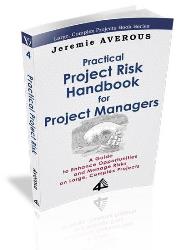In our new White Paper 2015-10 ‘8 Best Practices for Project Cost Risk Calculations Using the Monte Carlo Method’ we describe some key fundamental practices that need to be implemented when running Monte Carlo simulations of Project Cost with the aim to determine and/or justify a contingency amount. It is important to realize that as any simplified representation of reality, Monte Carlo simulations must obey certain basic rules consistent with its mathematical fundamentals to be representative of the Project situation, and that the method also has significant limitations.
 The eight practices discussed in the White Paper are:
The eight practices discussed in the White Paper are:
- Check that the model has converged
- Limit the number of lines
- Remove low probability, high consequence risks
- Make sure the built up of the Monte Carlo model is adequate in terms of line aggregates
- Run a Model sanity check with the Project Manager
- Avoid double dipping (in particular with allowances)
- Treat explicitly common causes and correlations
- Check that you did not include inadequate revenue opportunities
The best practices described in our new White Paper 2015-10 ‘8 Best Practices for Project Cost Risk Calculations Using the Monte Carlo Method’ are rarely all implementation which leads to issues with the result of calculations of contingency with this method. Monte Carlo as a way to calculate contingency might not always be sufficient, but when it is used it is important that the basics are covered to give some reliability and repeatability to the result.
While this White Paper elaborated on best practices for the conventional way of calculating a cost reserve based on a Monte Carlo analysis of the Project budget, this approach is not always sufficient to protect the Project against all Known-Unknowns.
There is actually no other way to determine the ‘right’ level of contingency than to rely on actual experience in a specific domain or industry. In some particular instances, it can be adequate to add very significant amounts of contingency. The Apollo Project mentioned in our handbook provides a good example. Other considerations include the dominance of time delays as a source of cost risk, refer to guidance given in our White Papers 2012-11 and 2012-12 ‘Estimate Your Actual Risk Level in a Project: the PVD Risk Level Formula’.
Find all these principles of Project Risk Management exposed in a comprehensive manner in our new Handbook,  Practical Project Risk Management for Project Managers (now published – click on the link to see it on Amazon!)
Practical Project Risk Management for Project Managers (now published – click on the link to see it on Amazon!)

